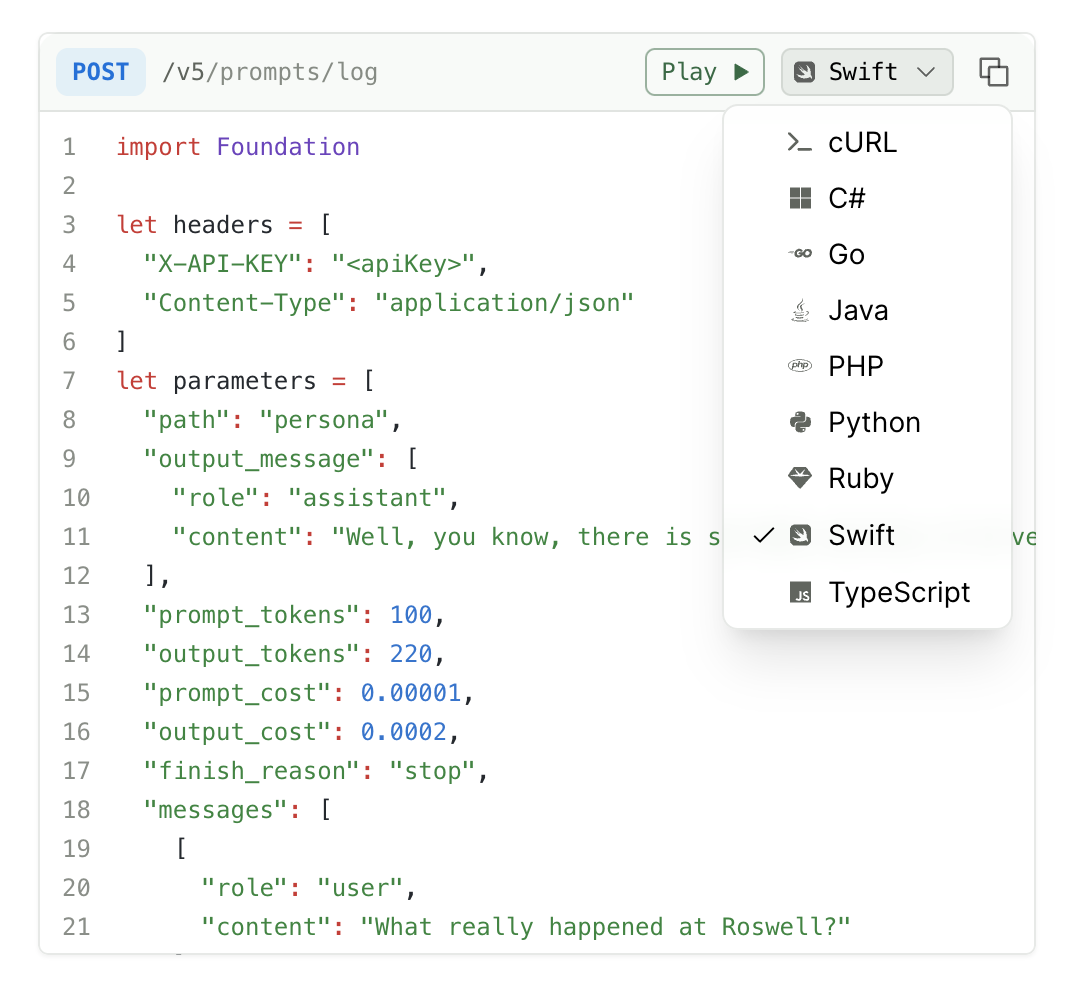Display HTTP snippets

Configuration
All documentation sites include HTTP snippets by default. To control which languages appear in the HTTP snippet selector, use the settings.http-snippets configuration in your docs.yml file.
curl is always displayed in the HTTP snippets selector and can’t be removed via docs.yml configuration. To hide it, use custom CSS.
How it works
Request examples
To generate HTTP snippets, add request examples to your API definition:
- For Fern Definition: Follow the examples documentation
- For OpenAPI: Follow the request/response examples documentation
Set default snippet language
HTTP snippets support several languages. Fern development work is driven by customer requests – request support for languages not listed here by opening an issue.
- csharp
- curl
- dotnet
- go
- java
- python
- ruby
- typescript
To set the default snippet language, use the default-language key at the top indentation level of docs.yml.
Generated features
HTTP snippets automatically include:
- Authentication headers with placeholders (e.g.,
<apiKey>) - Query parameters and request body formatting
- Content-Type headers
- Error handling patterns
- SSL/TLS configuration where applicable
Display behavior
- If your API has SDK snippets, those will be shown by default
- If no SDK snippets exist, HTTP snippets will display automatically
- User language preferences are saved client-side
Check out Hume’s API Reference to see HTTP snippets in action.

